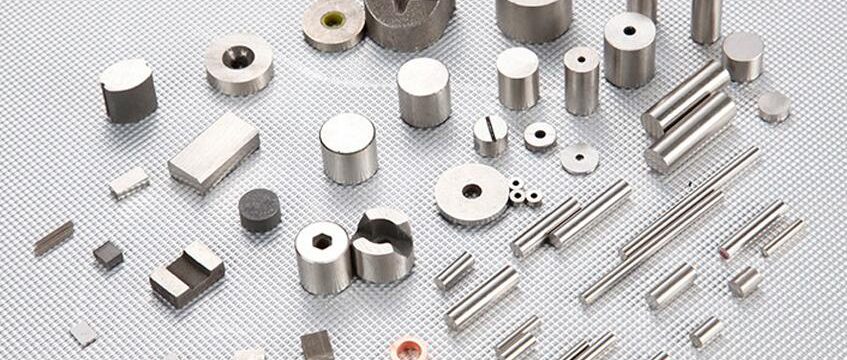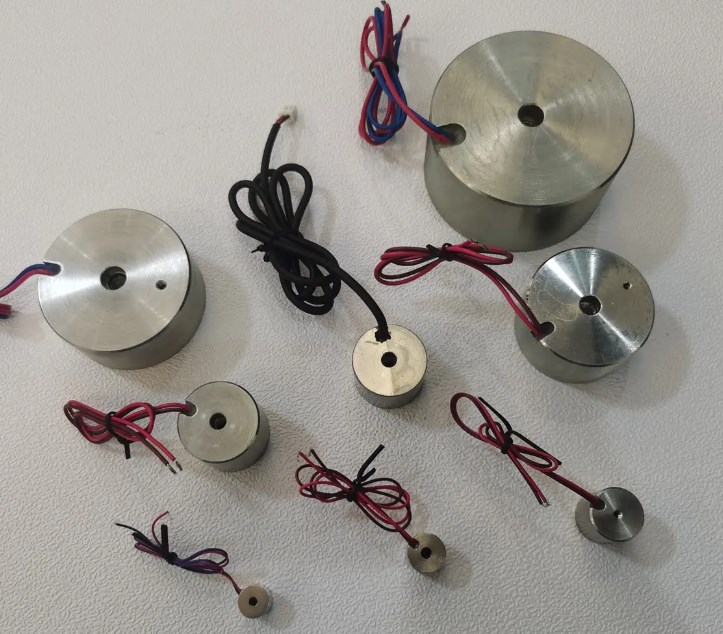Cast AlNiCo Magnets Vs. Sintered AlNiCo Magnets
AINiCo magnets are primarily composed of aluminum, nickel, and cobalt (Al, Ni, and Co). They may also include titanium, iron, and copper, and could be isotropic and non-directional or anisotropic and mono-directional. Before rare-earth magnets became a thing, AlNiCo magnets were the strongest known magnets. These magnets were developed in the 1940s, and they still are very useful today. Currently, AlNiCo magnets are used in several industrial applications, and everyday life. For example, AlNiCo magnets are used widely in electric motors, microphones, engineering applications, aerospace, sensing devices, and the military. In most cases, they are used because of their high thermal resistance. They can withstand very high temperatures without losing their magnets. Based on the production methods of AlNiCo magnets, there are two types: cast AlNiCo and Sintered AlNiCo. This means that AlNiCo magnets can be produced by either casting or sintering processes. This distinction is particularly important because they possess slightly different mechanical and magnetic properties, which often affect the choice of AlNiCo magnets in different applications. But in general, all AlNiCo magnets have excellent temperature stability, high residual induction, and relatively high energies.
Further Reading: General Information About AlNiCo Magnets
 Shapes and Types of Alnico Magnets
Shapes and Types of Alnico Magnets
Cast AlNiCo Magnets
Cast AlNiCo magnets are produced by pouring a molten alloy of the composite metals into a mold and then further processing it through various heat-treat cycles. The resulting magnet has a dark gray exterior and may have a rough surface. Further treatment, such as machining (grinding), can be used to smoothen the surface of the magnets produced. Cast AlNiCo magnets are the most commonly used method for manufacturing AlNiCo magnets. This process produces magnets with better magnetic properties than the sintering method, but it costs more. Another thing to note about cast AlNiCo is that they are orientated and anisotropic. This means that the magnet can only be magnetized in one direction, meaning that it has an improved magnetic strength. Note also that some types of cast AlNiCo are isotropic, which means that they can be magnetized in any direction.
Properties of Cast AlNiCo Magnets
- They are strong permanent magnets that produce strong magnetic fields, which are typically 3000 times more than the earth's magnetic field.
- Although they are very resistant to corrosion, they have low coercive force.
- They exhibit high magnetic flux density and are very resistant to demagnetization from vibration and shock.
- They are usually preferred for high-temperature applications because of their excellent ability to withstand extreme temperatures (as high as 930 °F).
- Applications of cast AlNiCo magnets include electronic ignition systems, Watt-hour meters, vending machines, sensors, industrial motors, generators, medical instruments, and many more.
Sintered AlNiCo Magnets
Sintered AlNiCo magnets typically offer slightly lower magnetic properties but better mechanical characteristics than the cast alternative. Sintered AlNiCo magnets can be produced when mixes of the metal (aluminum, nickel, cobalt, copper, titanium, and iron) powders are pressed to shape and size, and then sintered at 2300°F in the presence of hydrogen. The sintering process is ideal for large volume production of AlNiCos, and the resulting magnets have stronger mechanical properties than cast magnets. They are mostly suited for applications that require short magnets. The production of sintered AlNiCo magnets passes through milling, sintering, pressing, cooling, and magnetization processes.
Milling: The first step is usually to grind the metals or raw elements into fine powder or tiny particles, which are then pressed under tonnes of pressure in a die that closely resembles the magnet's desired shape.
Sintering: The pressed material is sintered in a furnace in a hydrogen atmosphere at a very high temperature to fuse all the pressed particles into one magnet.
Cooling: The red hot material is cooled either in the presence of an external magnetic (to produce anisotropic magnets) or in the absence of an external magnetic field (to produce isotropic without a preferential direction of magnetism).
Pressing: Although sintered Alnico magnets do not require further machining, you can still subject them to further processing to achieve the desired magnet shape.
Magnetizing: The raw magnetic material is finally magnetized with a solenoid magnetizer that generates the necessary electrical pulse that fully magnetizes the magnets.
Properties of Sintered AlNiCo Magnets
- These magnets have high magnetic flux density, high resistance to corrosion, and excellent temperature stability.
- Sintered AlNiCo magnets can be used in applications where they can withstand temperatures as high as 840-930°F.
- When it comes to size and dimensional tolerances, Sintered AlNiCo magnets are relatively smaller than cast magnets and do not necessarily require further processing after production.
- Sintered AlNiCos also show excellent corrosion resistance.
- Typical applications of sintered AlNiCo magnets include components for temperature and electronic sensors used in automobiles, magnetrons, regulators, motors, and meters.
Conclusion
AlNiCo magnets come in different grades, with the most common grades being 5 and 8. Bothe cast and sintered magnets are great, but for applications that require strong magnetism and better temperature resistance, cast AlNiCos are preferable. On the other hand, sintered AlNiCos, are better in structural strengths. Whatever your choice is, you may want to make sure that it is suitable for the intended application. For more information, please visit https://www.stanfordmagnets.com/.















